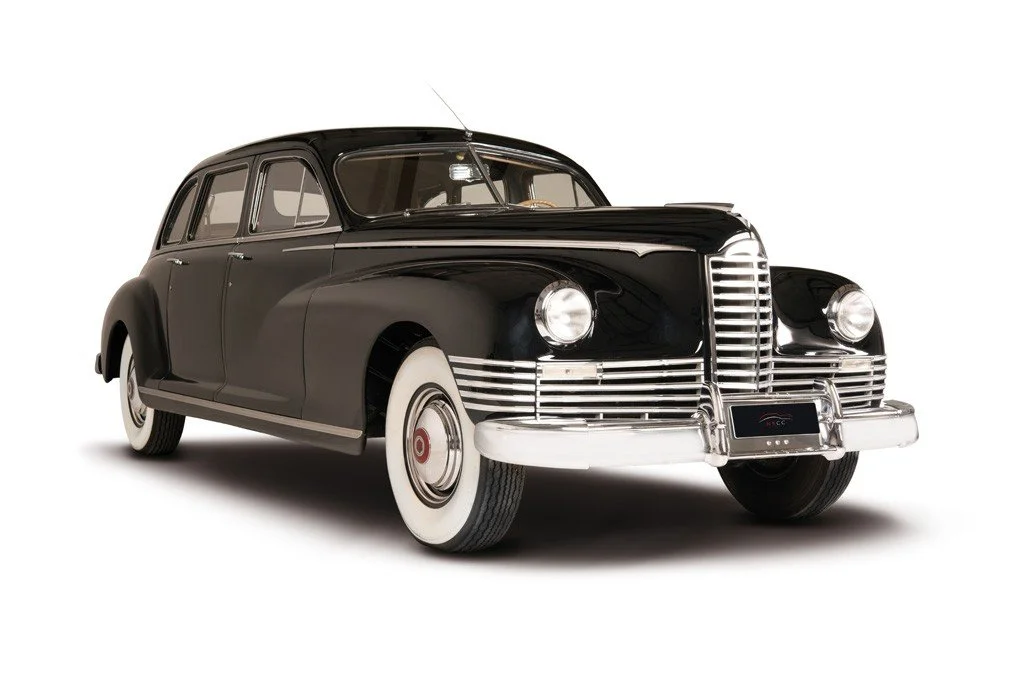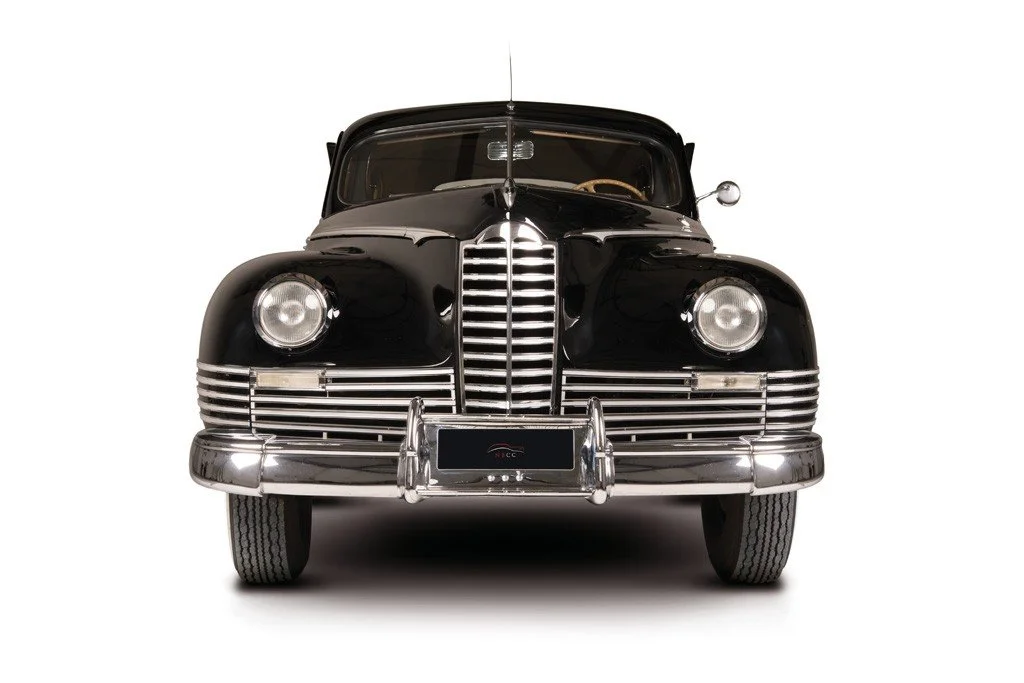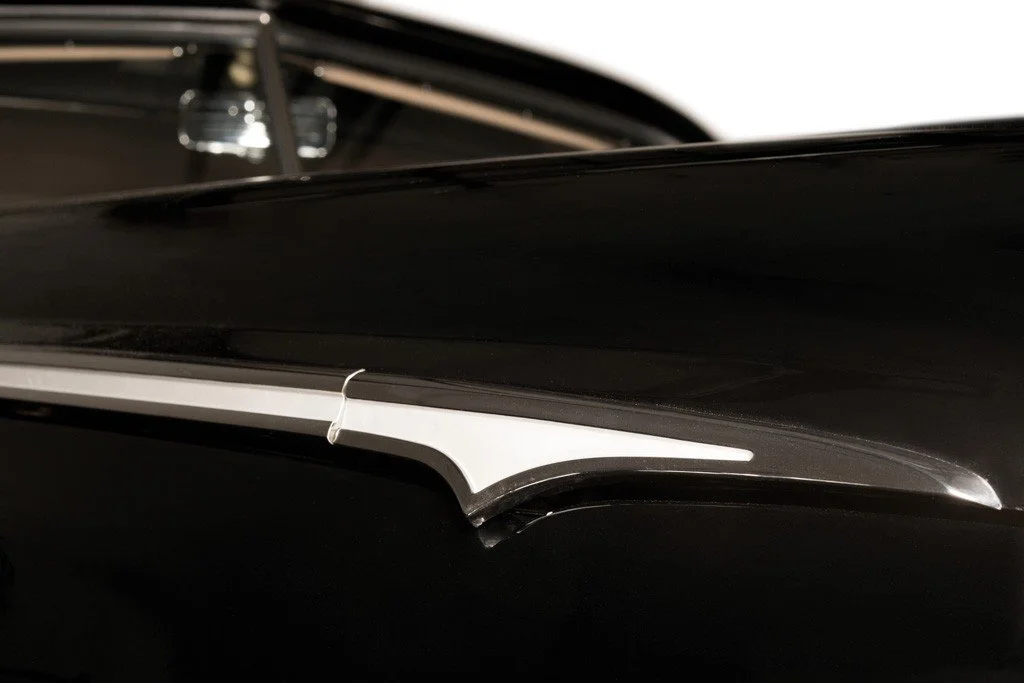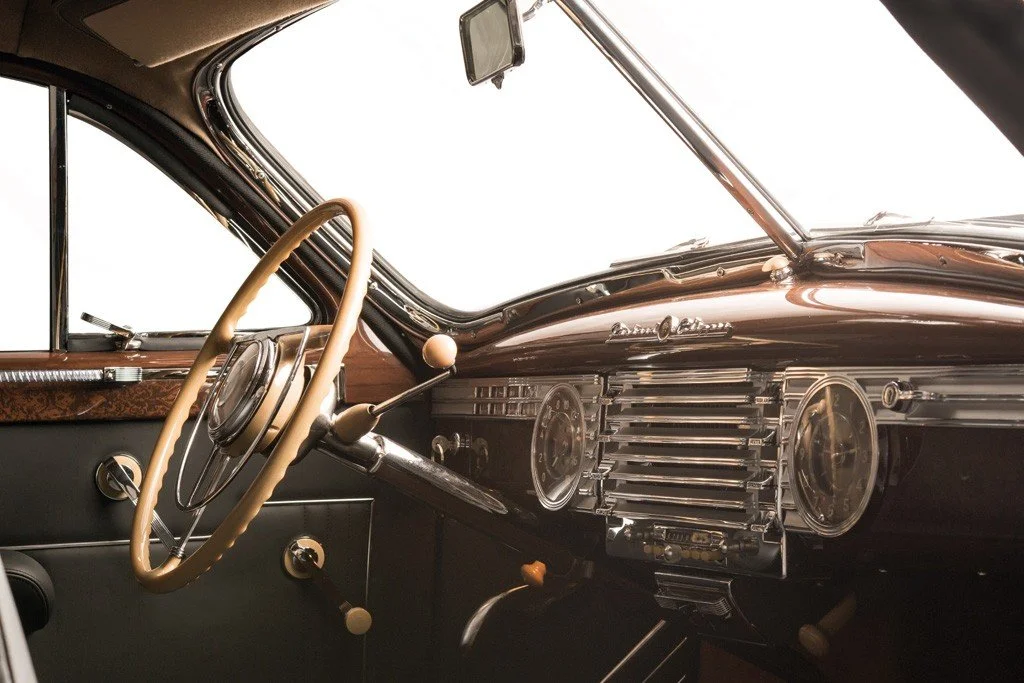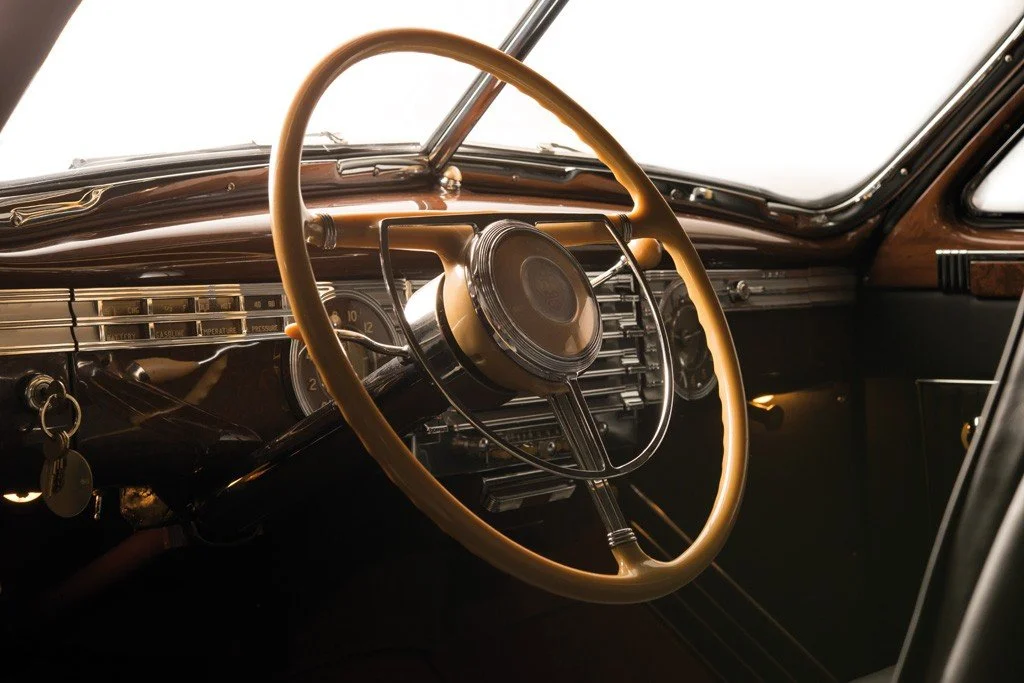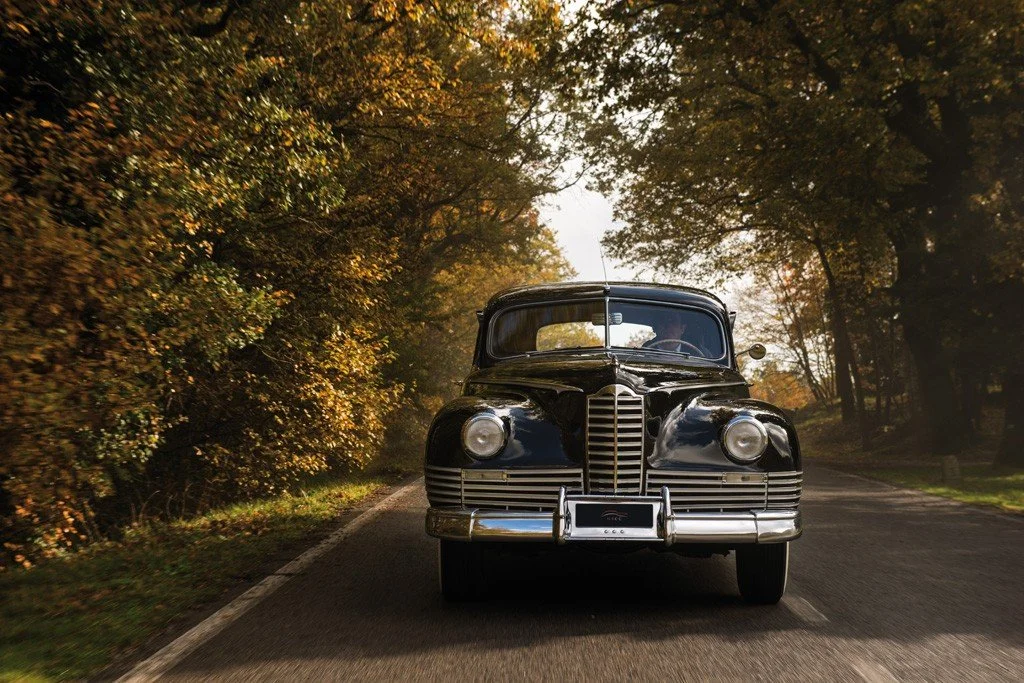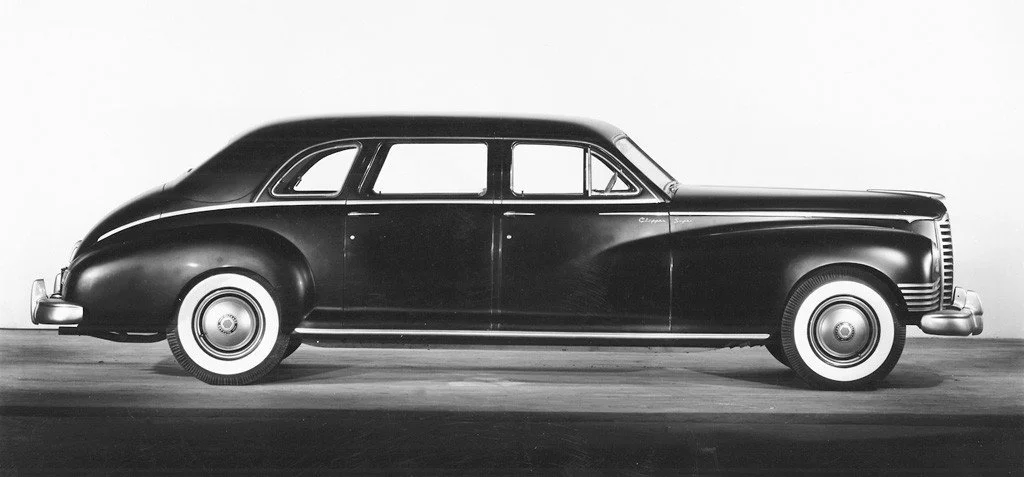-
Packard cars were kept in high esteem on the European continent, and the export market was very important for the marque. Many Royal Houses and governments favored Packard as their prestige and parade vehicles. This 1947 Packard Limousine series 2126 was exported new to be used in the fleet of the Vatican State. It was registered there with license place SCV 23, and for many years it was used as official vehicle for some high prelate or escort for Pope travels. When put to rest in the seventies, it was purchased by a company that specialized in movie rentals, and was used in many Italian movies.
When Mr. Nicola Bulgari heard of the whereabouts of the car and her fascinating history, he made all possible efforts to purchase the Packard, and finally succeeded in 2014. Mr. Bulgari was especially attached to the car as he had seen her for the first time in 1963 in the Vatican Garages, and even took some pictures with the SCV license plates. The car had long been neglected, and a proper frame-off restoration has been performed by the Nicola Bulgari Car Collection staff to return the car to her former glory. -
Company
Packard Motor Car CompanyWheelbase
148inInterior trim
Black leather/Beige clothBrakes
front and rear drumsMake
PackardLength
235inEngine
inline 8 - 356cidTires
7.50x16Model
Super Clipper Eight Series 2126 - Model 2150Width
76inCarburetor
1 Carter WDO 531 SOriginal Price
$4,521Body style
4-door LimousineWeight
4920lbsHorsepower
165hp @ 3600rpmProduction
1,790Model year
1947Exterior paint
BlackTransmission
Synchro-shift 3-speed manual -
Packard history had always been plagued with limited resources and fierce competition from the large companies. In 1935, when it became apparent that the luxury market had collapsed, the mid-priced 120 saved the company. But by 1939 sales had diminished to only 76,000 units per year, with just a half million dollar profit. The Packard Motor Company President Max Gilman and chief stylist / chairman Ed Macauley called a young stylist, Howard Darrin, who had signed many beautiful designs on European luxury cars, and gave him the task to draw a completely new car in just ten days for $1,000 a day. Darrin, a young California native, had moved to Paris in the mid-twenties to sell used prestige cars. With his friend Thomas Hibbard, they often rebuilt old used cars to make them more saleable. In a short time, they earned a good reputation for beautiful styling, and many European and American manufacturers gave them new chassis to be dressed with new bodywork. They preferred to work on Packard cars, turning out outstanding designs, and their relationship with the Company grew stronger. When the need for a new car couldn’t be delayed any further, Darrin was given the design task. For ten days, he slept on the drawing board, but the end result was breathtaking. The new car was a completely new design that was completely different from the other Packards in the line-up, but at the same time it was clearly a Packard. The trademark grille was modified to look more modern, but the feeling with the Company was clearly there. Viewed from the side, the front fenders had a sweeping line that was carried into the doors, ending just before the rear fender. The belt line swept downward, as in all the Darrin designs. The roof was flowing into the trunk lid, for a true fastback design. The proportions of the body were completely new, with the body being wider than it was tall, and the new 1941 Packard Clipper was the widest auto in the industry. Not only was the body completely new, but the chassis also bore no similarities with the other models in the Packard line-up.
Production was well underway, when the Second World War broke out, and all car manufacturers had to convert their facilities to wartime necessities. Airplane engines, tanks and other weapons took the space formerly occupied by car production. When civilian production resumed in June 1945, the Clipper suddenly wasn’t as modern looking as before the war.
The GM models that debuted for the 1942 model year could be considered really new cars for 1946, as production had been halted for three years. People would buy anything new on four wheels, so the 1946 and 1947 Packard Clipper sold well, but plans for a new model were already underway. The 1946 and 1947 models were virtually identical, and were identified by series number, 21 series in this case. The line-up was divided into Clipper six, with a 120 inch wheelbase, and Clipper eight, with a 127 inch wheelbase. The luxurious limousine was built on a 148 inch wheelbase, powered by the strong 356 cubic inch engine that developed 165 horsepower. This was the most powerful engine in US car production, topping the Cadillac V8 by 15 horsepower. Top speed was over 100 miles per hour, not an easy accomplishment since the car weighed over 4000 lbs. -
Until 1929 the Vatican had no cars at all, relying on traditional horse-drawn carriages. It was only when it was established as a State that it acquired its first automobile, a Graham-Paige. That car remains in the Vatican museum to this day, but the other pre-war limousines that were used for VIP transport – Buicks, Cadillacs and Packards – were disposed of and eventually acquired by The NB Center.
The history of the Vatican limousines is astonishing. The NB Center’s archive includes photographs of several of them – brand new and still unregistered – being blessed by Pope Pius XI in 1938, of the Cadillacs with Pius XII and John XXIII, and of the cars’ use by notable figures including royalty, heads of state and high-ranking diplomats.
Some of these ex-Vatican cars were found in excellent condition; they were not much used, so their engines were near-perfect. Others fared less well; a Cadillac sold off in the early 1960s ended up in the 1970 movie ‘Patton’ and was in poor shape. One of the Packards was also used in movies and had acquired a different engine and transmission, leaving it with two shift levers. Nevertheless the underlying build quality of the cars is very evident; in some cases the chrome brightwork merely needed polishing.
The skilled and committed NB Center teams in Rome have learned a great deal from their colleagues in Allentown, and the repair and restoration of the Vatican cars were all managed entirely in-house by the mechanical staff led by Sergio Caudai and by the skilled bodyshop team of Carrozzeria A. Rizza.
The limousines have all received sensitive restoration, maintaining as much of their precious originality as possible. These exceptional and historic vehicles should stay in Rome, of course, but The NB Center intends to create a special place for them in the city, separate from the rest of the collection, where their intriguing story may be presented in all its fascinating detail.

